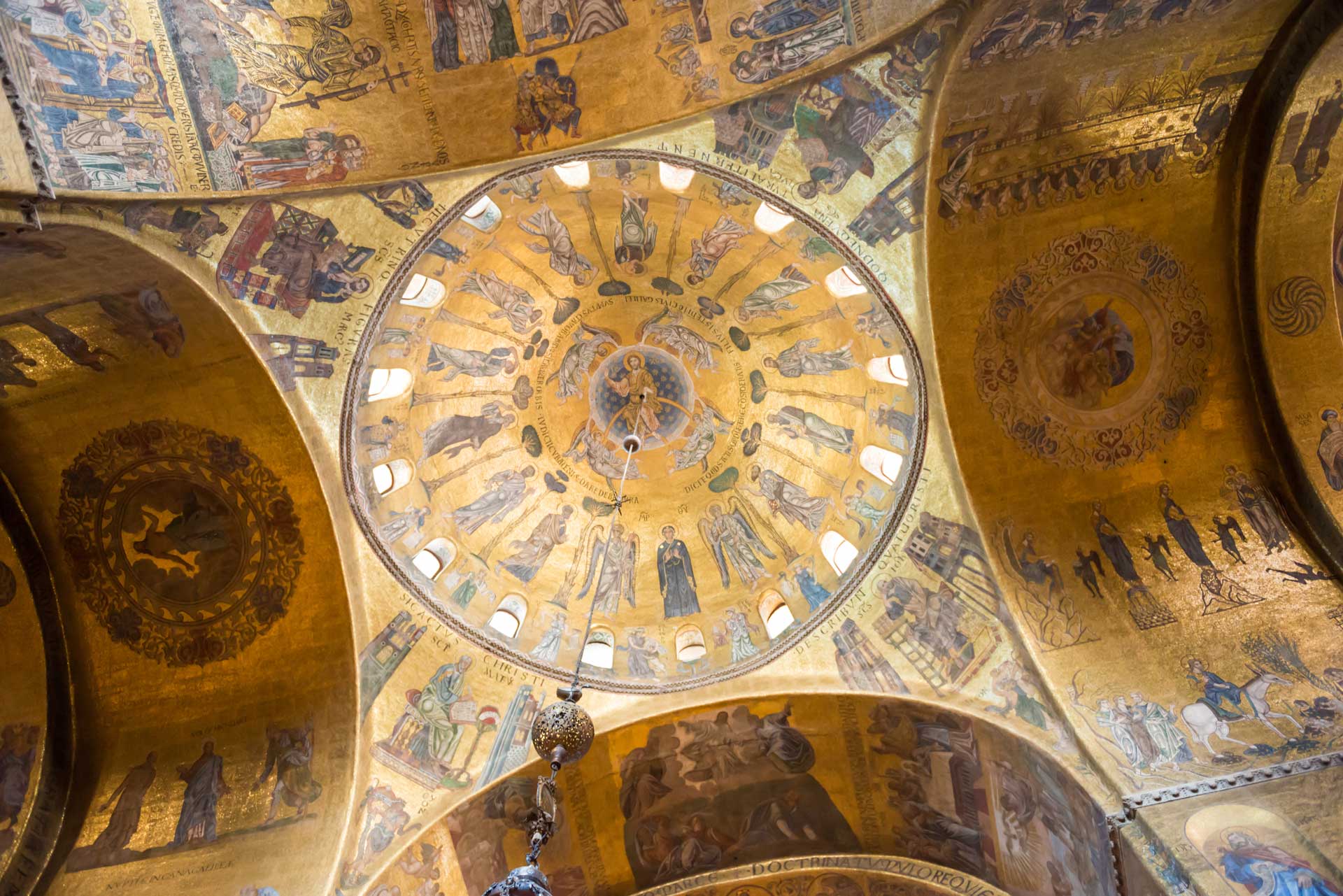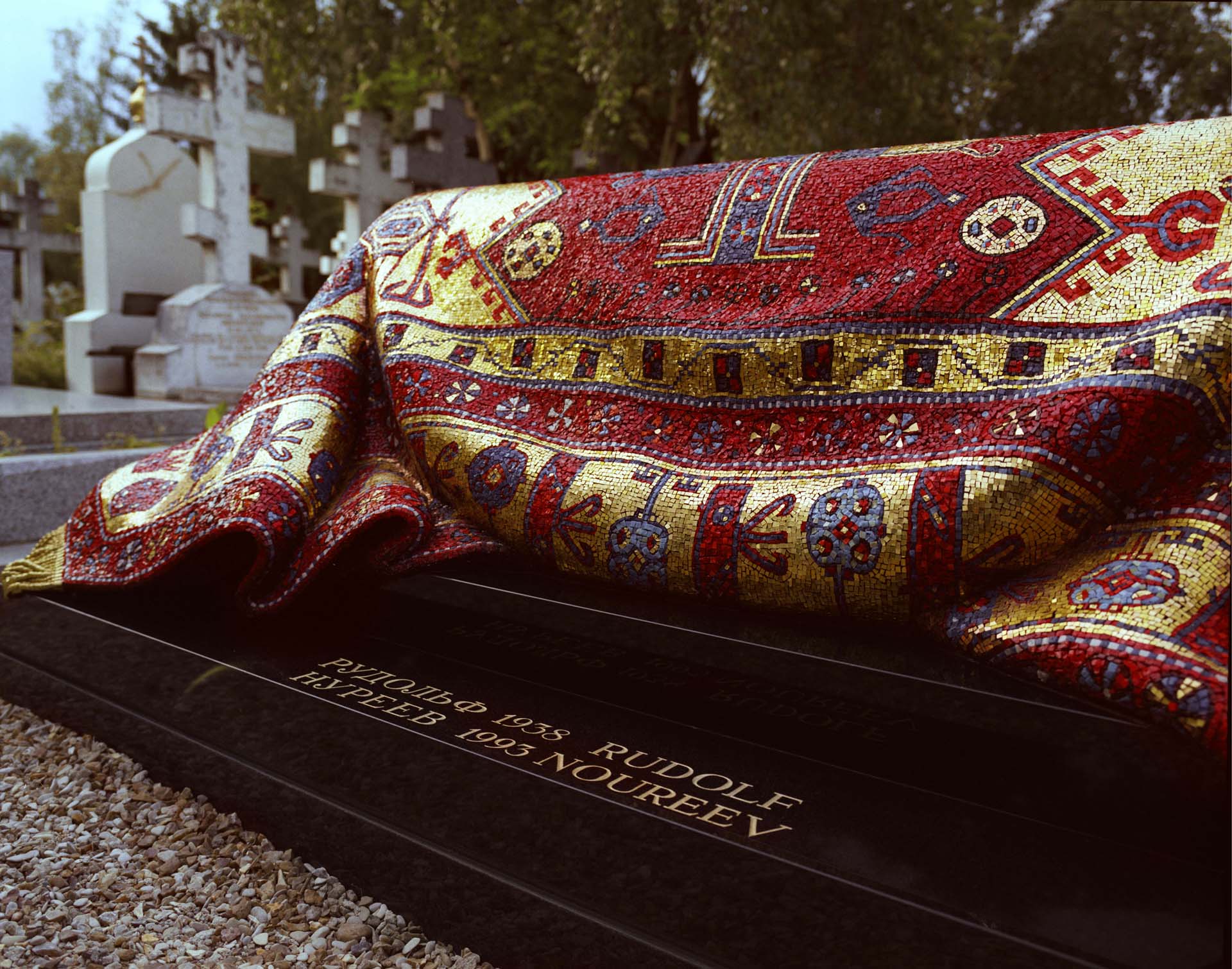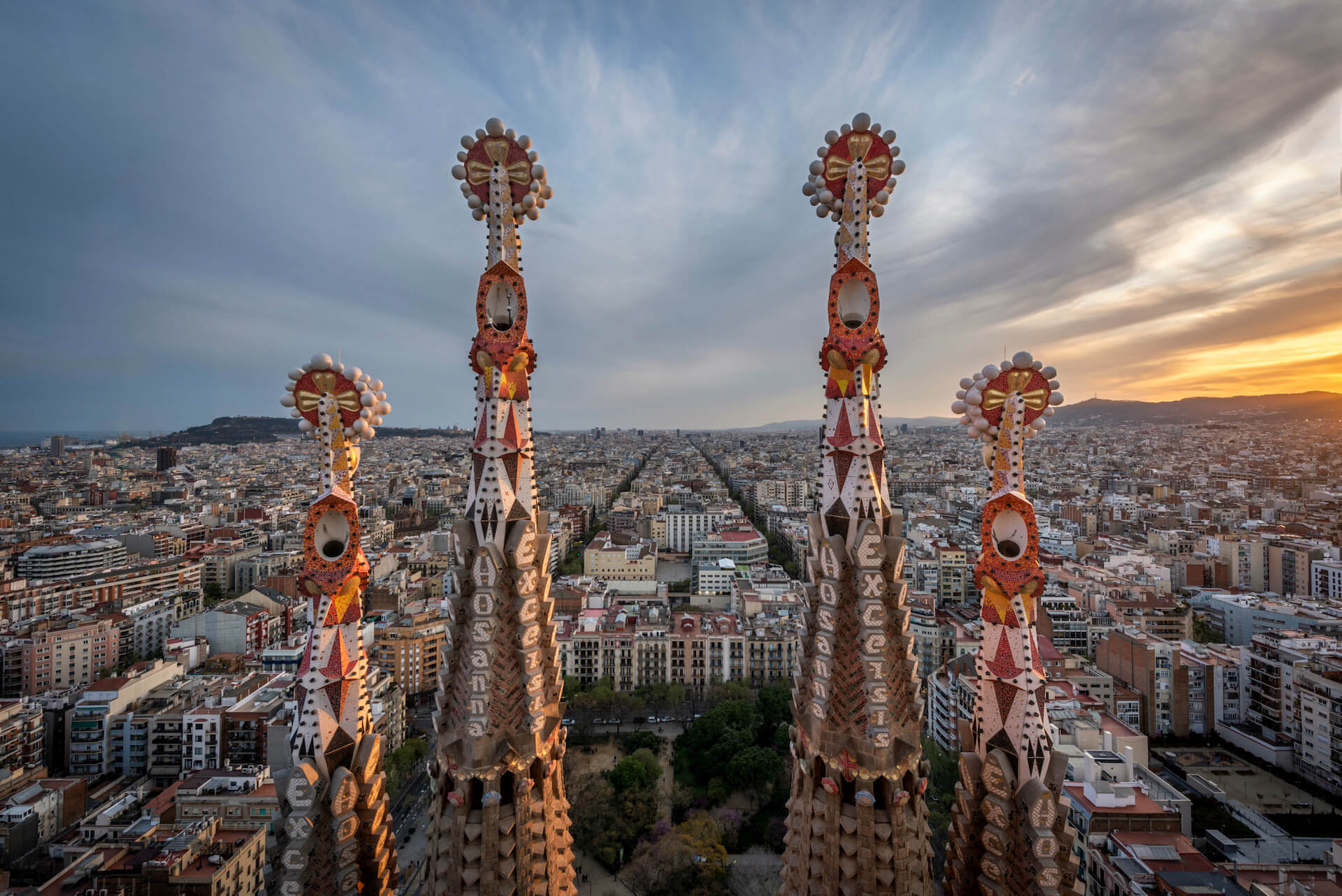
Since 1926, the historic Orsoni furnace has provided the smalti plates that decorate the Sagrada Familia, the most iconic work of the architect Antoni Gaudí, a celebration of light
and color. Gaudí used to say, “Color is the expression of life.”
The colored enamels are supplied both in plates, which are then cut into pieces using the
famous trencadis technique, and in square tiles with an iron mold still preserved in the
furnace. Venetian glass enamels adorn the spires, pinnacles, and the Nativity facade of the Sagrada Familia. Each smalti color retains its original name, such as “scorzetta” and
“becco di merlo.”
The Basilica’s History
The Sagrada Familia is an extraordinary temple, distinctive for its origins, foundation, and purpose. Born from the genius of the architect Antoni Gaudí, the project was supported by the community for the community. Now, more than 140 years after the laying of the first stone, the construction of the Basilica continues in Barcelona, involving five generations that have witnessed its evolution.
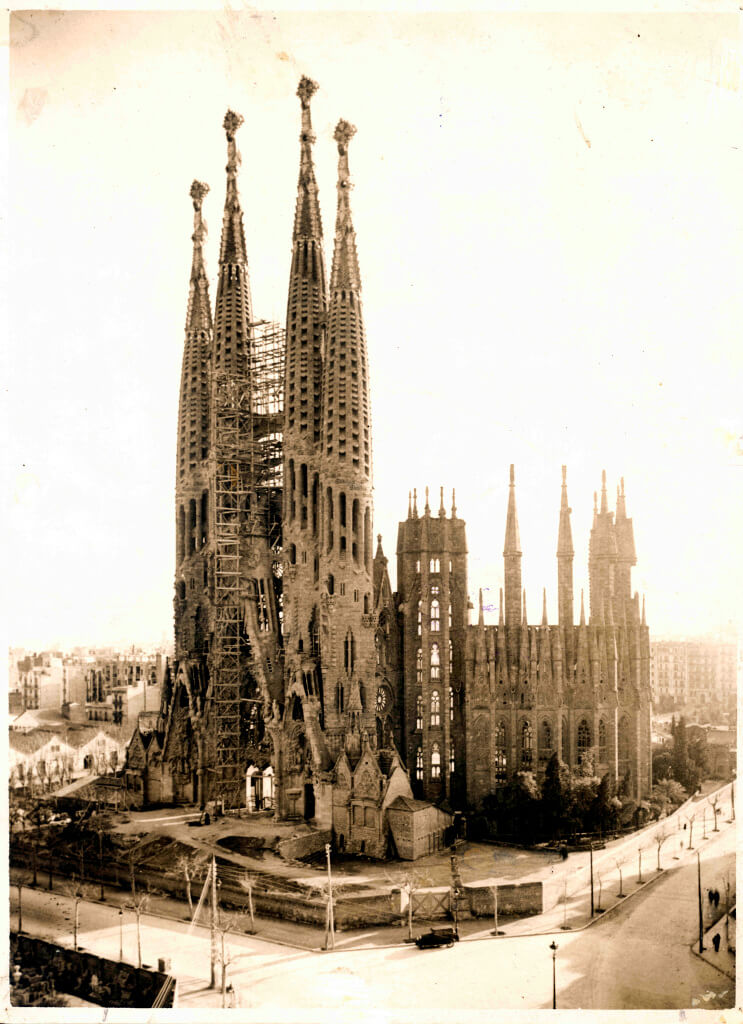
Geometric Shapes
In the final phase of his career, Gaudí chose to design and build using a combination of
geometric shapes. He applied this approach to the pinnacles of the Nativity facade and the design of the vaults inside the Temple, using and combining regulated curved surfaces. This created a character and overall expression reminiscent of life, in line with his architectural style. The geometric shapes Gaudí used, such as spheres, octahedra, cubes, and triangular pyramids, can be found on the tops of the bell towers.
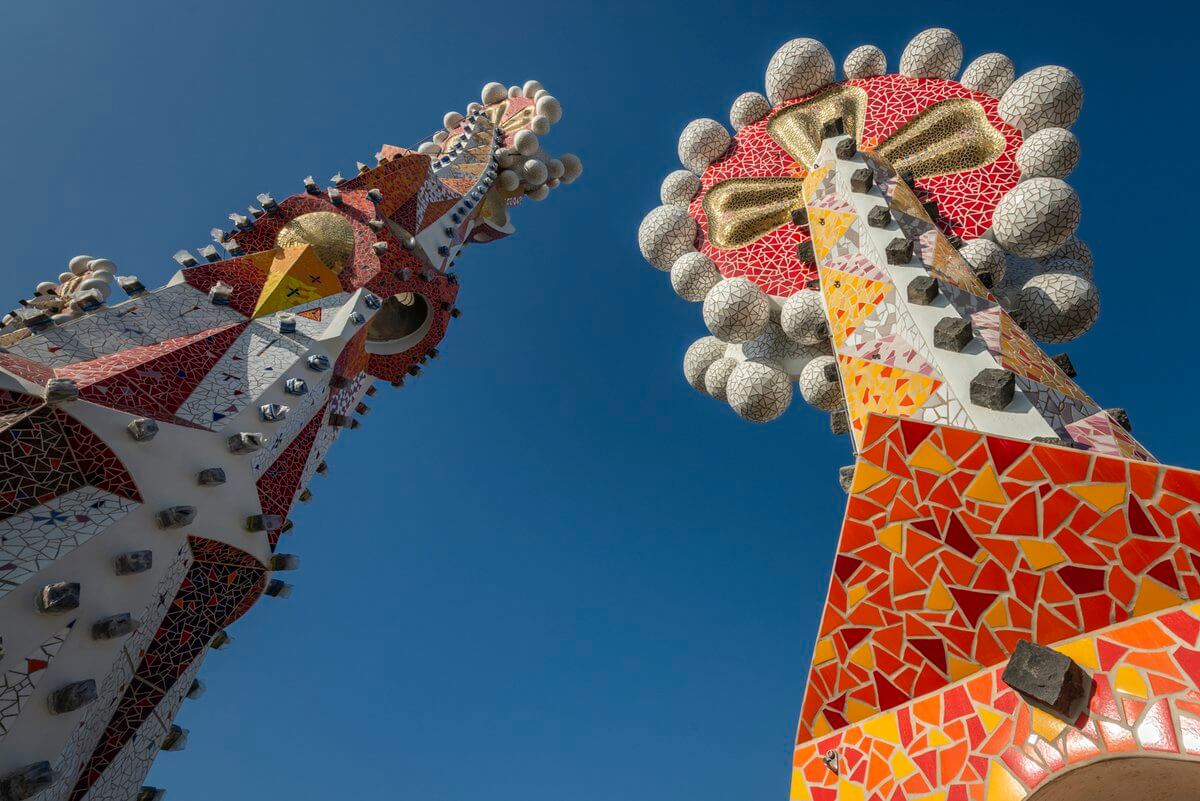
Color
Gaudí asserted that color is an expression of life, and that’s why he wanted it to be a
significant part of the Sagrada Familia. This is evident in various elements, including the
cypresses on the Nativity facade, the pinnacles and tips of the towers, the episcopal
attributes, fruits, shafts of wheat, and grapes, all adorned with trencadís mosaics made of Venetian glass and ceramics glazed in a variety of colors, as well as bricks and stones.
Inside, symbolic colors are present in stained-glass windows and inscriptions on light points in each column’s knots in the central nave and transept, along with diffusers in the vaults.
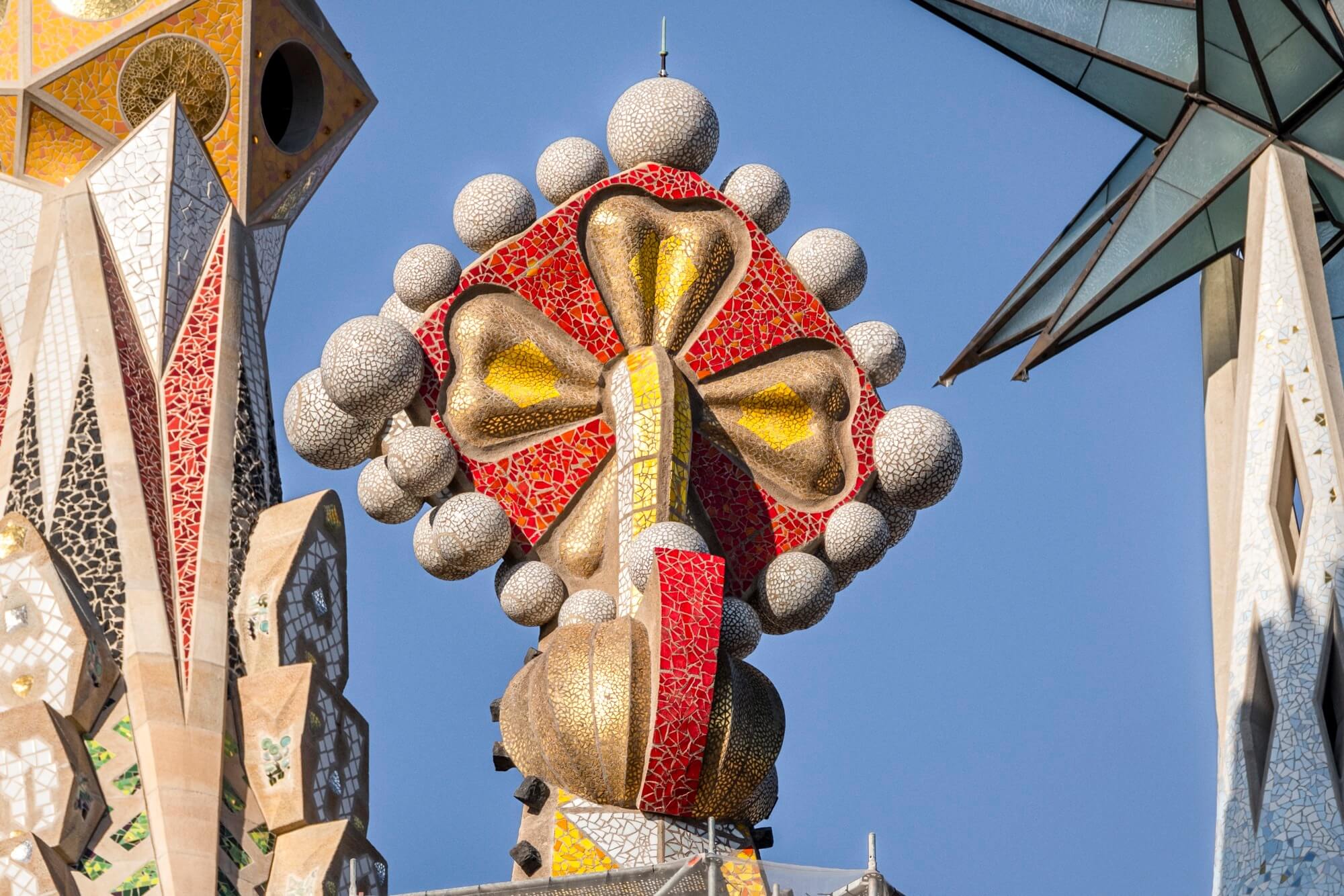
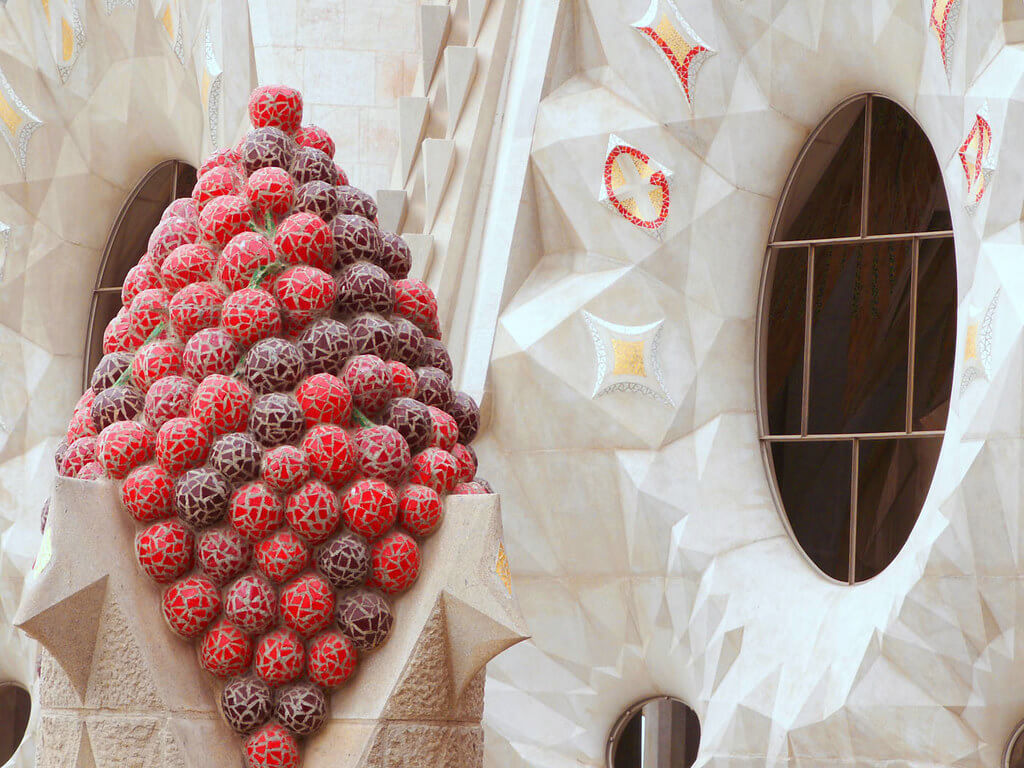
Side Nave Facades
In addition to the section of the facade on the Temple transept, it is essential to mention the facades on the side naves, each topped with six triangular pediments featuring baskets of fruit in ceramic trencadís mosaics. These baskets, created by Etsuro Sotoo following Gaudí’s models, contain twelve types of fruit arranged according to the seasons. The symbolismrepresents the fruits of the Holy Spirit, embodying good deeds inspired by the Spirit. A similar decorative style is found on the facades of the central nave, where Sotoo’s trencadís mosaic represents white and red grapes, a chalice, and shafts of wheat with a host on top, symbolizing the Eucharist.
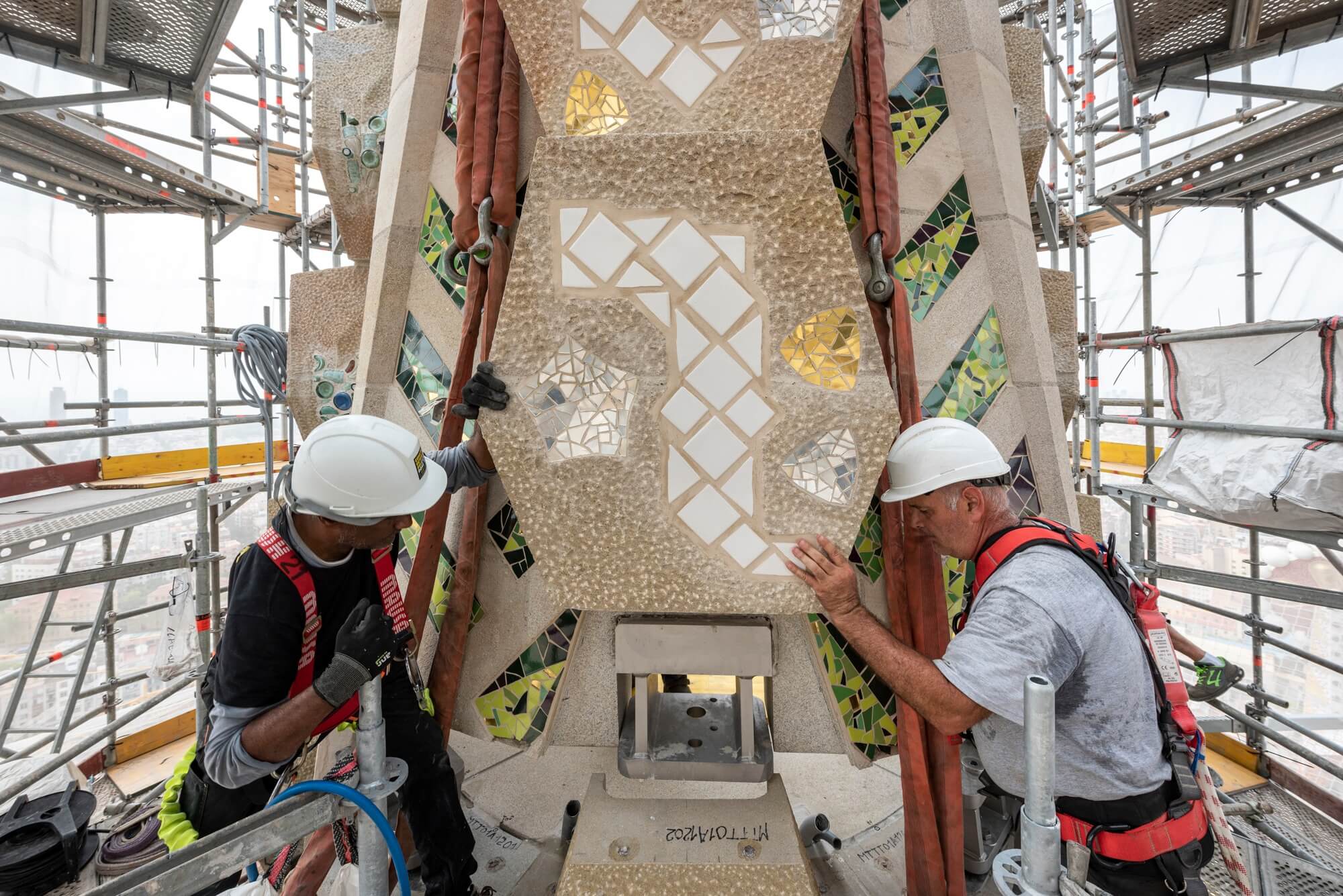
Aware that he wouldn’t be able to finish the entire Temple, Gaudí chose to build it in phases, making it more challenging to abandon the project if he could complete at least one section. After completing the crypt and before starting work on the apse facade, he tackled the Nativity facade. His disciples continued this method, and the construction progressed according to a schedule, with various sections completed over the years. The final phase includes the completion of towers and the Glory facade.
CREDITS
Projects
Antoni Gaudì
Mosaicists
Fundació Junta Constructora del Temple Expiatori de la Sagrada Família
Photo
Fundació Junta Constructora del Temple Expiatori de la Sagrada Família
